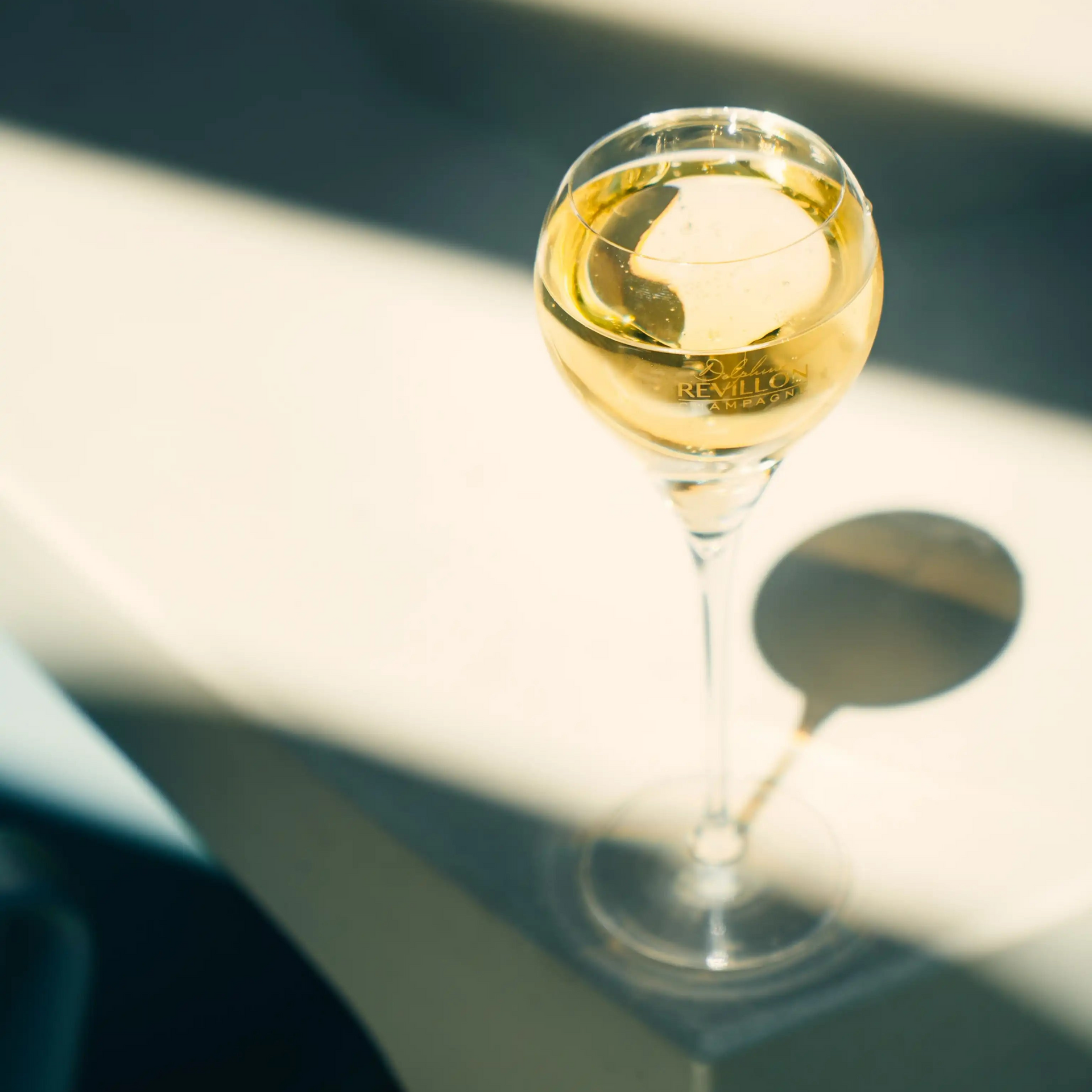Brut, Extra Brut, Rosé… How to Navigate Champagne?
A simple, elegant guide to help you make the right choice, according to your mood.
In France, eight out of ten people drink champagne.
Yet fewer than a quarter consider themselves true connoisseurs.
And in front of the label, doubt often appears: Brut? Extra Brut? Rosé? What’s the difference, and which one should you choose?
This guide was designed for you—simple, clear, and refined.
Because champagne is not just a festive drink. It’s a language. A gesture. A way of celebrating.
The Major Champagne Families
Brut Champagne: the perfect balance
Brut is the most universal style.
With controlled sugar dosage (between 6 and 12 g/l), it offers a subtle balance between freshness and roundness.
It is the most consumed champagne in the world: nearly 62% of sales.
- Appearance: pale gold, fine and steady bubbles.
- Nose: notes of white fruits, citrus, sometimes a floral touch.
- Palate: accessible, elegant, refreshing.
Perfect with appetizers, seafood, or light dishes, Brut is a safe choice—the classic expression of elegance.
Extra Brut Champagne: purity revealed
Extra Brut is for the initiated.
With less than 6 g/l of sugar, it expresses the true character of the fruit, without artifice.
Drier, more precise, it seduces those who love minerality, intensity, and energy.
- Appearance: pale gold, crystalline shine.
- Nose: citrus, dried fruits, brioche notes.
- Palate: direct, intense, long and clean finish.
It pairs beautifully with delicate dishes: scallop carpaccio, sushi, or aged cheeses.
At Delphine Révillon, Extra Brut Secret is a signature cuvée: 60% Chardonnay, 35% Meunier, 5% Pinot Noir, aged for years, awarded at the Concours Mondial de Bruxelles.
Rosé Champagne: seduction in color
Rosé is more than a color—it’s an experience.
More generous, more sensual, it expresses the gourmand side of champagne.
- Appearance: from delicate pale pink to light ruby.
- Nose: red fruits—strawberry, raspberry—sometimes a spicy touch.
- Palate: round, vibrant, radiant.
In recent years, rosé consumption has grown remarkably.
Why? Because it’s festive, modern, and photogenic.
It’s the champagne for summer gatherings, romantic evenings, and moments of complicity.
How to Choose According to Your Mood?
- Classic & elegant? → Brut: the perfect balance.
- Bold & refined? → Extra Brut: pure intensity.
- Romantic & festive? → Rosé: colorful brilliance.
Champagne is not a rigid science.
It’s a matter of moments, desires, and personalities.
That’s also the philosophy of Delphine Révillon: #DrinkBetter. Choose what resonates with you, what makes sense for your lifestyle.
The Future: Organic & Responsible Champagne
The market is evolving.
Lovers of champagne now seek conscious consumption: organic, sustainable, lower in sugar.
At Delphine Révillon, we use grapes from certified organic vineyards.
A rare achievement, reflecting a deep commitment.
Because champagne can be refined—and also respectful of life.
Our Tips to Fully Savor Champagne
A champagne can transform… depending on how you serve it.
- Temperature: forget the ice bucket. At 46–50°F (8–10°C), aromas express themselves beautifully.
- Glassware: choose a white wine glass over a flute. It lets the bubbles breathe, the aromas blossom.
- Time: let it open. A long-aged champagne deserves a moment of patience.
These small gestures turn an ordinary tasting into an unforgettable moment.
Conclusion
So, Brut, Extra Brut, or Rosé?
There is no absolute truth—only yours.
- Brut reassures and balances.
- Extra Brut surprises and sharpens.
- Rosé seduces and brightens.
The choice is yours.
Champagne is not meant to be rushed.
It is meant to be chosen.
— Champagne Delphine Révillon
#DrinkBetter



